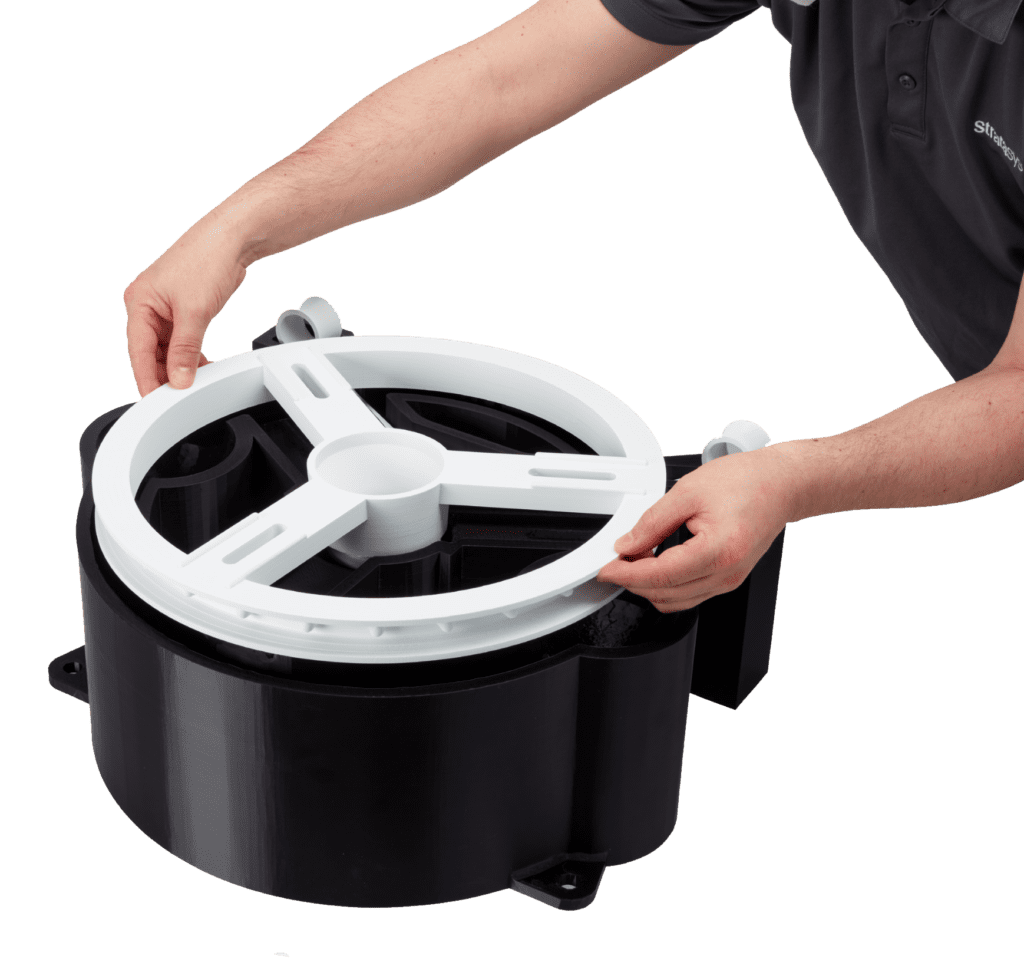3D-printing solutions for rapid prototyping
Stratasys 3D printing for rapid prototyping
Why use 3D printing for rapid prototyping?
Rapid prototyping with 3D printing is the quick, easy, cost-effective way of realising your ideas and allowing them to become successful products. Produce concept and functional modelling for rigorous testing, ensuring total peace of mind before you commit to costly production tooling.
The flexibility and speed of the evaluation and refinement process allows designers, engineers and manufacturers to critique more revisions in less time, so deficiencies can be seamlessly ironed out and the end result is perfection.
Design cycles that previously took weeks or months can now be completed in hours, giving businesses adopting 3D-printing technology a major advantage over their competitors.
640,000 colour combinations
With a stunning collection of over 640,000 colour combinations, designers have much more freedom to do what they do best. Simply select your Pantone colour code and you are good to go. If an exact match can not be found, there will be an alternative available to closely mimic the colour you require.
Design, refine & iterate freely
Creating real-life prototypes that mimic the look and feel of your final design is just a few clicks away. You can test and test and test until designers, engineers and stakeholders are happy with the final product, with GrabCAD Shop allowing full transparency between teams.
Print anything from anywhere
A CAD file is created using computer software and then sent to the 3D printer to be sliced into thin layers. These layers are then printed one at a time until the whole object is created. The whole process takes anywhere from a few minutes to several hours depending on the size of the part and printer used, and you can press print or schedule the print anytime, anywhere.
Exceptional results keep you ahead of the competition
Speed and agility are hallmarks of today’s highly competitive business environment. As a result, companies need products to market quickly and deliver exceptional service to customers with minimal delay. Because of these pressures, most companies rely on rapid prototyping techniques and new technologies to bring their new products to market as quickly as possible.

What is rapid prototyping?
Rapid prototyping is a process by which an idea or concept is quickly developed into a prototype. It’s used in many industries, from engineering to product development. Prior to the increase in capabilities of industrial 3D printing, the whole industry was known as “rapid prototyping” in the 2000s. Today, it is a subsector of additive manufacturing, but a subsector that displays everything that is exciting about the industry.
Rapid prototyping refers to the process of creating prototypes using computer software in combination with 3D printers. It involves creating 3D models of an object on a computer and then printing the object using a 3D printer. There are several different types of 3D printers on the market, including stereolithography (SLA), fused deposition modelling (FDM), selective laser sintering (SLS), digital light processing (DLP), and more. Each printer has its own advantages and disadvantages based on the type of material it can produce.
- A prototype is a working model made to demonstrate a concept or system before it is manufactured on a large scale. It is used to test a new product design, manufacturing process, or other concept to verify that it will work properly.
- The term “prototype” is referred to as a physical object or digital twin that is made to test a new model or process before it is mass produced, such as automobiles, aeroplanes, and computers.
- Prototypes are often built with inexpensive materials instead of expensive ones so that they can be replaced or repaired easily if they are damaged during testing.
How does it work?
The two main techniques used in rapid prototyping are additive manufacturing and CNC machining. We will focus on additive manufacturing and prototyping, which is the process used by most designers and manufacturers today.
Rapid prototyping using additive manufacturing – also known as 3D printing – means that an object is created by laying down successive layers of material to create a finished part. This process can be used to create anything from jewellery and art objects to structural parts and even medical devices.
Types of prototypes
Functional prototype:
Used for functional testing such as fit, assembly, ease of use, ergonomics, etc. These types of prototypes often include moving parts that allow the product to function as intended before actual production begins.
Cosmetic prototype:
Used to evaluate the appearance of the product. They are usually made using cheap materials and are not built to withstand wear and tear.
Appearance prototype:
This is the prototype that is used for showing potential customers how the product will look when it’s done.
Mockup prototype:
This is simply a drawing of the finished product.
Low volume prototype:
These are usually built by hand using inexpensive materials or by printing them with 3D printers.
Production prototype:
This type of prototype is built using the same processes that will be used to manufacture the actual product and is made from the same materials.
High volume prototype:
This uses the same manufacturing processes that will be used to create the final product but is built from less expensive materials.
Quality assurance prototype:
This type is used to test the final design and make sure that it conforms to the specifications and requirements of both the manufacturer and the customer.
Fit, Form and Function Prototype:
If none of the above types of prototypes address the needs of the designers or engineers, the F2F prototype is created.
Pre-production sample:
After a prototype is made, a sample is ordered from the factory to verify the designs and ensure that everything works correctly.
Manufacturing prototyping:
This is a fully assembled sample of the final product that is shipped directly from the factory to the customer for testing and review.
Engineering prototype:
This is used to evaluate the engineering specifications of the product prior to manufacturing.





